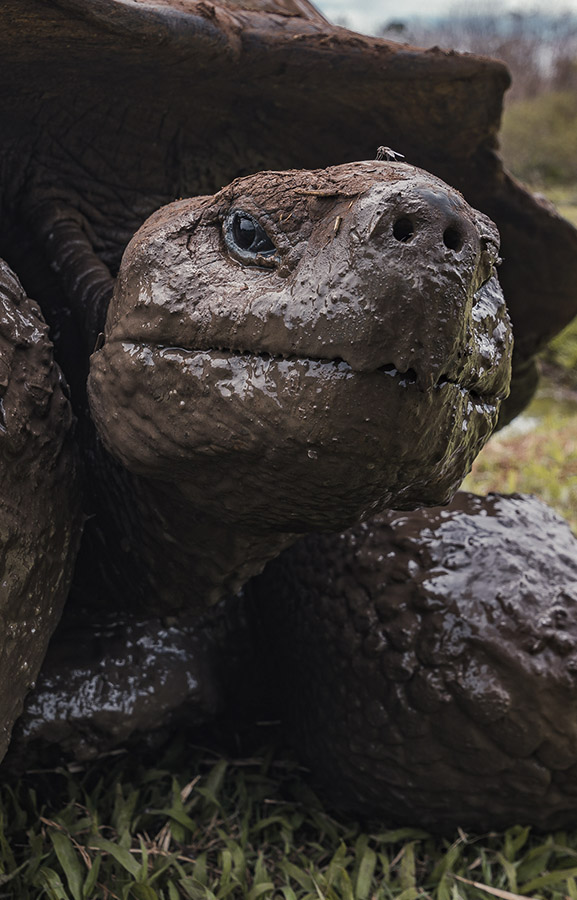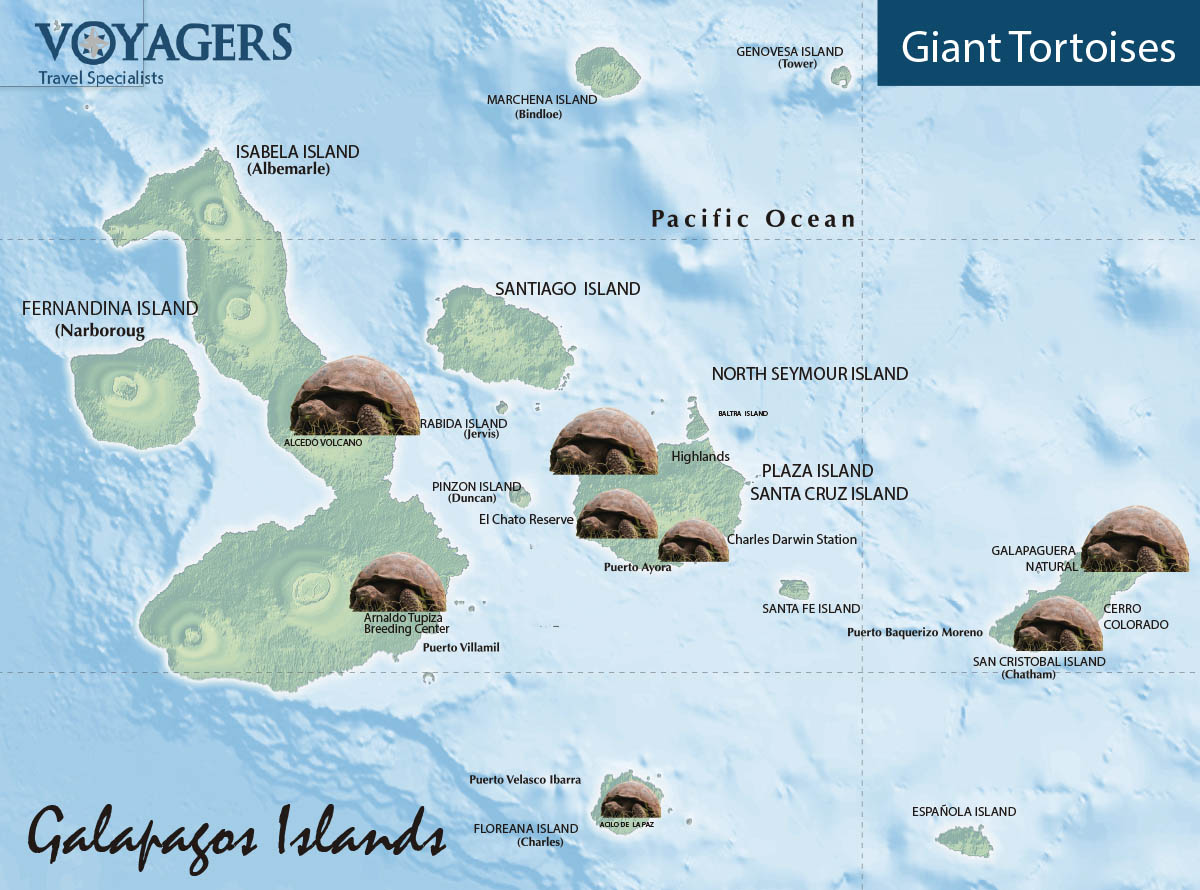Where to find them?
All equal at the dinner table
When it comes to food the Galapagos Tortoises can choose from the menu offered to most inhabitants of the islands. That includes native fruit, grass, and the crowd-pleasing cactus pads. Yet, food and water are not always available. Therefore, adaptability is key to surviving the challenges presented by the Enchanted Islands.
Superior to all, the Galapagos Tortoise is capable of storing food and water for up to one year. This is the reason why when presented with a reasonably big puddle they have been noted to shamelessly gulp at it taking in as many mouthfuls as possible.
The Others
The giants’ remarkable ability to survive was unfortunately the indirect cause of their demise. Once buccaneers, whalers, and fur sealers discovered that they could have fresh meat for their long voyages by storing live tortoises in their ships, a long-lasting hunting season began. This led to a mssive exploitation of the tortoise population for its multiple uses, which included extracting its oil for lamp lighting, led to the colossal loss of 100,000 to 200,000 tortoises in two centuries.
Besides the human threat the giant tortoise competed for food and habitat with feral goats and other large mammals while their eggs and hatchlings were prey to feral cats, pig, rats and other introduced animals by human visitors. Out of the 14 original giant tortoise species in the Galapagos Islands 10 now remain alive. And, in a striking comparison to previous centuries there are today on average 15,000 to 20,000 Galapagos Tortoises in total.
Time to relax
Lazy is as lazy does. No other than the Galapagos tortoise to know slothfulness — they can pack a serious 16 hour long resting session per day. During the hot season they can be seen sleeping peacefully in mud wallows, water, or under a bush, but through most of the day the tortoises simply soak up the sun to warm their cold blood.
Intermittently, of course, they eat and engage in other activities. Some of those include territorial displays which consist of a neck raising contest, and mating. Females migrate to nesting areas after mating and can lay 2 to 15 eggs which will hatch every 130 days.
So what is the secret to the inevitable charm of these giant tortoises? Certainly not the most handsome around, but positively one of the most enduring creatures on the planet. If you are perseverance oriented, then the Galapagos giant tortoise is your spirit animal. You are welcome to take a tour to visit the Galapagos Islands, But don’t pull a Darwin — please don’t mount the tortoises.












